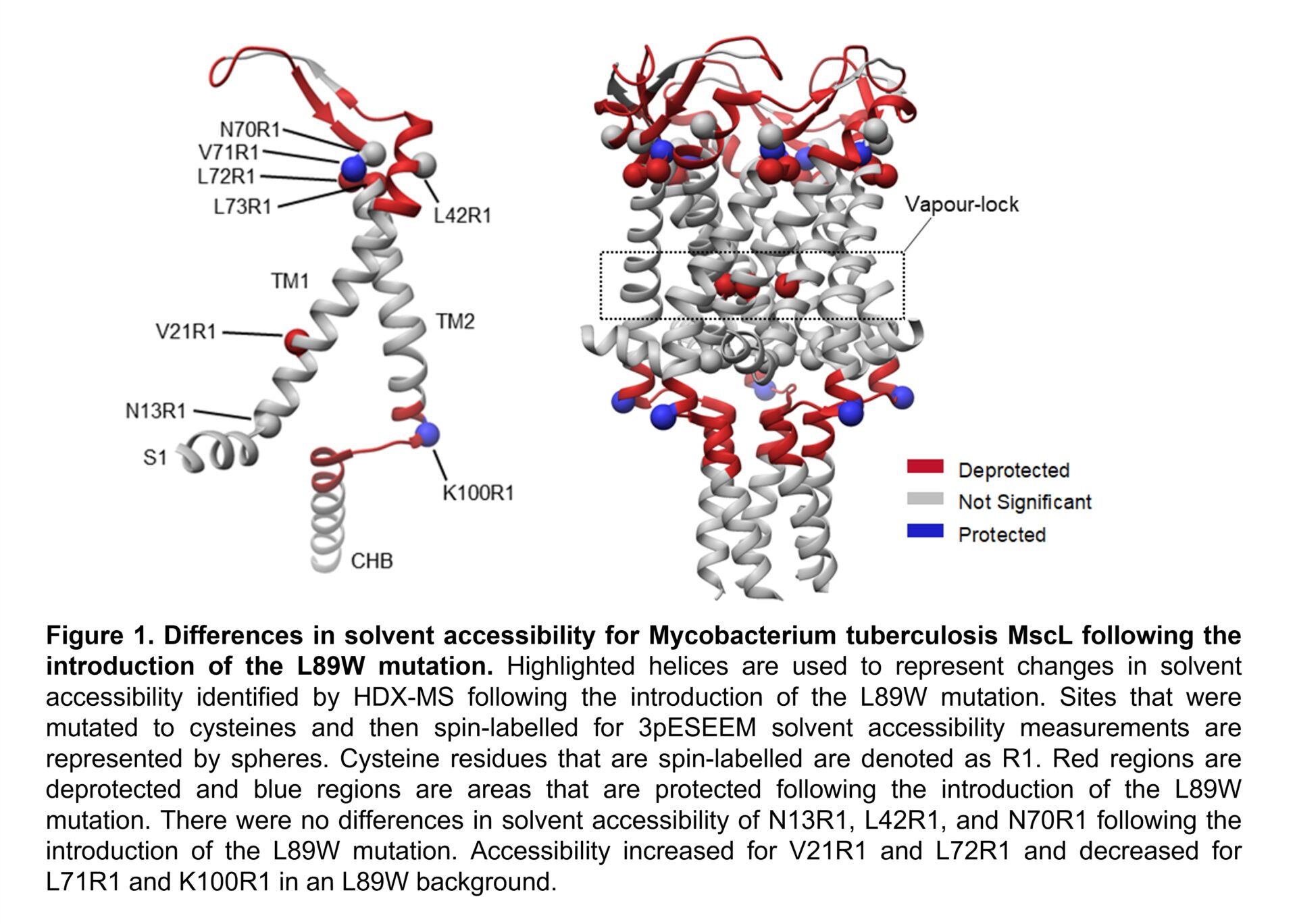Ion channels control solute flux by undergoing conformational changes which regulate their function in response to stimuli. Bacterial mechanosensitive channels sense changes in lateral tension generated in the membrane, acting as pressure-safety valves to prevent cell lysis (1). However, some of these channels also have unique features that suggest additional physiological roles. Bacterial mechanosensitive channels can be divided into two structural families: MscL and the MscS-like superfamily (1). The large-conductance (MscL) and small-conductance (MscS) mechanosensitive channels are well characterized structurally and functionally, but an understanding of the link between structure and function is missing. Lipid availability within pockets has been linked with mechanosensation in these channels (2), but the gating mechanisms and discrete subconducting states have not been fully defined. Studies on other members of the MscS-like family, such as YbiO, are limited. Several of these mechanosensitive channels have been implicated in bacterial pathogenicity and virulence, so understanding their mechanisms could provide avenues for the development of antimicrobials (3).
Previously, it was shown that lipid removal from transmembrane pockets through a point mutation (L89W) leads to the stabilization of an expanded subconducting state (2). However, whether there is a correlation between the tension-mediated state and the state derived by pocket delipidation in the absence of tension remained unknown. To investigate the physiological relevance of this subconducting state we probed solvent accessibility using a combination of electron paramagnetic resonance (EPR) spectroscopy and hydrogen-deuterium exchange (HDX) mass spectrometry (4). This was coupled with membrane stretching molecular dynamics (MD) which allowed the stabilization of a state under tension. This allowed us to investigate the structural changes associated with distinctively derived states. We found that pocket delipidation by either membrane tension or molecular modification causes MscL to occupy a similar structurally defined subconducting state (5). These findings revealed the mutation stabilized state is an intermediate in the channel activation pathway. They also provide support for models that implicate lipid availability in the regulation of channel gating in mechanosensitive channels. Ongoing structural work aims to investigate whether lipid availability within transmembrane pockets is also a regulatory mechanism of channel gating within larger members of the MscS-like superfamily.

